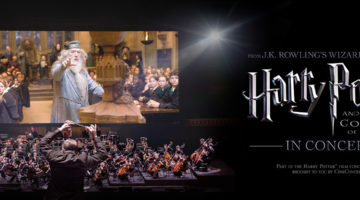Woody Allen's Golden Age Thinking
Film provides us with a cultural memory; it displays narratives that often guide the viewer through a world in which they do not exist, but visit for a temporary moment. Woody Allen is a prolific filmmaker, and he embeds nostalgia as a device to transport his audiences to a time they may not have experienced. It is the elements of the past that add that touch of magic to much of his work. This was best demonstrated in 2011’s Midnight in Paris, where he writes his protagonist, Gil Pender, as a man with a fictional disorder called “Golden Age Thinking”, described as one who is “living in the past and would be happier in an earlier time”, and is dealing with feelings of nostalgia, which is “denial of the painful present”. If we take a look at Woody Allen’s filmography, we’ll see that it is Woody himself who is caught up in this train of thought, a nostalgic man who time after time transports his audience to a well perceived, “better” time.
As much as technological advancements are changing the way we watch and experience film, there is still something about that classic feeling we get when we watch an old movie. Woody Allen utilizes this even in his newest films, taking audiences back to a time where witty dialogue and interesting characters were enough to carry a film, but also exemplifying the beauty in what many of us never got to experience, the years in which we were not yet alive, and the magic of the past.
Magic in the Moonlight (2014)
The latest in Woody Allen’s canon of films is Magic in the Moonlight, which takes us back to the south of France in 1928. The time period is essential to the plot here, as we have a magician/myth debunker going head to head with a self-proclaimed medium and psychic, a feat that would be much easier on both ends had the film taken place today, for her to fool and him to disprove. However, the 1920s setting makes way for fancy costumes, jazz music, old cars and evening soirees. Half the charm of this film is in its set design and overall atmosphere, which is something we can more so thank the 1920s for than Woody Allen himself.
Blue Jasmine (2013)
The thing about Woody Allen’s films is that even when they take place in the current day, they still have a nostalgic quality. From his title sequences, his lack of anything resembling modern music (always in favour of old jazz standards), and his characters that sometimes feel as if they’ve been transported from other classic films, Allen always manages to maintain an air of the past. Blue Jasmine which stars Cate Blanchett as a former socialite who is down on her luck in every which way, drew major comparisons to A Streetcar Named Desire, the 1947 play written by Tennesse Williams, which was later adapted into a film starring Marlon Brandon and Vivien Leigh in 1951. Similarities in the plot, characters and performances are all striking, and further propel Woody Allen as the king of homage cinema, constantly referencing films of the past.
Midnight in Paris (2011)
Opening with a montage sequence of scenery from Paris alongside the 1952 jazz standard Si Tu Vois Ma Mere, the most obvious film up for discussion is Midnight In Paris, which is the epitome of nostalgia portrayed on film. Gil Pender is an American screenwriter who has fallen in love with Paris while visiting with his fiancé. Possessed by the idea of Paris in the 1920s and all of the artists who lived there at the time, Gil finds himself magically whisked away at midnight and transported into the past. Befriending the likes of F. Scott Fitzgerald, Ernest Hemingway, Gertrude Stein, and Pablo Picasso, Gil becomes involved in a time and place that seems to be much more enchanting than his own. Although Midnight in Paris is only a couple of years old, Woody Allen has been perpetrating this kind of thought in his films for years. This movie conveys the idea that one is always longing for what they don’t have, and that the past will always be intriguing to those who never got to experience it. While Gil is longing for 1920s Paris, his love interest, Adriana, is longing for La Belle Epoche in the 1890’s. Through this, Woody Allen portrays that the past is always more appealing than the present, a device that resides in most of his films. Needless to say, the sense of place is also strong in most of Woody Allen’s films, and here it is the romanticism and traditions of the city of Paris that contribute to the nostalgic feeling. There is something about the foreign nature of European cities that make them feel like part of the past, although they still thrive in the same way today.
Bullets Over Broadway (1994)
This film takes us to 1920’s New York, where playwright David Shayne has just arrived on Broadway. The film again uses the city and the time period to transport audiences, and here in particular takes us to the theatre world, which in itself is a very traditional and nostalgic environment. The plot also involves crime, featuring a gangster boyfriend, another throwback to films of the past.
The film was recently adapted into a stage musical, actually on Broadway, and this in itself further indicates how an audience still thrives on more traditional methods of entertainment, such as the stage musical. Woody Allen himself was integral to the adaptation of the film to stage musical, and songs were taken from the 1920s and 1930s.
Shadows and Fog (1991)
This film is self-proclaimed as homage to German Expressionist Filmmakers such as Fritz Lang, G.W. Pabst, and F.W. Murnau, as it is a black and white film that employs the stylistic choices similar to these German filmmakers, and deals with writer Franz Kafka as a central theme. It’s existential themes and obvious influences make it stand out as one of Woody Allen’s most nostalgic films. Not many filmmakers take on the challenge of imitating the classics, in particular, German Expressionist film, but Woody Allen is a rare filmmaker who pays tribute in almost every film that he makes, and although Shadows and Fog is not one of his greater successes, it goes to show just how involved Allen in his filmmaking influences, and the greats that came before him that constantly shape his own technique.
Manhattan (1979)
Painted in black and white, 1924’s George Gershwin classic, Rhapsody in Blue playing, and a beautiful portrait of the city of New York, Woody Allen transports us yet again into a seemingly distant world, although the film takes place in present day 1979. Even the opening line of the film from our protagonist Isaac (played by Woody Allen) precisely tells the audience that this is what New York should look like, “Chapter One: He adored New York City… He romanticized it all out of proportion. To him no matter what the season was this was still a town that existed in black and white and pulsated to the great tunes of George Gerswhin”. The themes of the film, which include adultery, homosexuality, and other complex aspects of relationships, are all element which no 1920s film would have dealt with. Adding this atmosphere to the film is almost what gives it the classic feel, and Manhattan is proof that the aesthetic quality of a film can help make it feel like something much more timeless than just its narrative structure can convey.
The truth of the matter is that we could talk about almost each film in Woody Allen’s filmography and how it is a throwback to the past. Allen is known as one of the best living filmmakers, churning out a film every year and having a filmography that most filmmakers will never come close to. However, he is very aware of his own influences and the element of memory and nostalgia that is so essential to his work.
Nostalgia films constantly reference old movies, and are not a representation of what is natural or real, but exist as a copy of a copy, an original idea that has been lost. While Woody Allen constantly brings seemingly new ideas to the screen, they are embedded in a grander history of film that is much larger than Woody Allen could ever achieve on his own. This is not a negative comment, as Woody Allen creates a very post-modern, almost parody-like, way of using the medium of film. Many of his films are not reflections of real life, but real life as portrayed in film. He also instills a sense of prosthetic memory, that being, memories that are not derived from a person’s lived experience, but are created through the exposure to a range of cultural technologies, whether it be books, movies, music, or any other medium. Just as Gil Pender’s idea of 1920’s Paris is informed by the books and movies he has read or seen, so is our own memory, constantly being manipulated by the culture that we consume, giving us ideas of a time that we could never experience ourselves, but can live through the story-telling of such filmmakers like Woody Allen. It may not all be one-hundred-percent accurate, but it is a rather remarkable phenomenon, that in 2014 we can still be transported to a time that no longer exists, and at the hands of a filmmaker who seems to be as in love with the past as he is with film itself.








